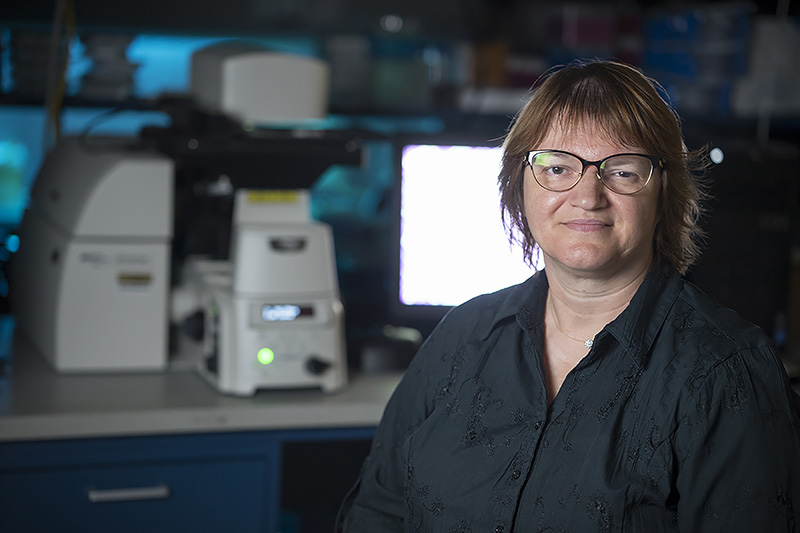Purdue University researchers have developed a technique they hope will provide valuable information about the growth of certain cancers and the ability of drugs to fight them.

Sophie Lelièvre, a professor of cancer pharmacology at Purdue University, helped lead researchers to develop a new technique using a 3D cell culture environment and a curved surface to provide valuable information for doctors and patients battling some aggressive types of cancer. (Image provided)
The team created a new way to grow tumors that focuses on cancers of the breast, prostate and pancreas, some of the most aggressive types of the disease. The National Cancer Institute estimates those three types will make up 30 percent of new cancer cases this year in the United States.
The team created a technique, called disease-on-a-chip, which uses a 3D cell culture environment and a curved surface that more closely resemble human body conditions than their traditional 2D counterparts do. In addition to testing and screening for drug development projects, the technique is geared towards creating personalized models of tumors that doctors can use to help determine the best course of treatment.
“This is an extraordinary leap for Purdue in the fight against cancer and one of the most serious issues for doctors and patients – resistance to treatment, “ said Sophie Lelièvre, a professor of cancer pharmacology at Purdue, who helped lead the research team. “Health researchers teamed up with engineers for intellectual discourse, which led to this breakthrough. We have proven that a curved surface for the culture of carcinomas provides a tremendous advantage in the area of cancer research.”
Lelièvre, whose interest in this discipline began after her mother’s best friend died of breast cancer, said the team compared its technique against two commercially available systems for drug screening. The Purdue researchers found that only their technique could accurately determine how anti-cancer drugs would react both in laboratory testing and in living organisms.
“The physical properties of our technique, including the 3D element and curved shape, allow us to better follow cancer growth and determine the effectiveness of drugs,” Lelièvre said. “Our testing structure closely mimics the tumor growth in ducts for the areas of the body where these aggressive types of cancer develop.”
One of the challenges the team faced was figuring out a method to create the curved design for very narrow channels and cells that are very sensitive to their environment.
“At Purdue, we are focused on working across disciplines to move innovations forward to save lives in Indiana and across the world,” said Rahim Rahimi, a postdoctoral scientist in Purdue’s School of Electrical and Computer Engineering.
Rahimi led the engineering portion of the research with another postdoctoral scientist, Manuel Ochoa from the Ziaie laboratory, in collaboration with Farzaneh Atrian, a biologist and graduate student in the Lelièvre laboratory.
The team worked with the Purdue Office of Technology Commercialization to patent the technology. The research team is looking for partners.
Source: Purdue University
